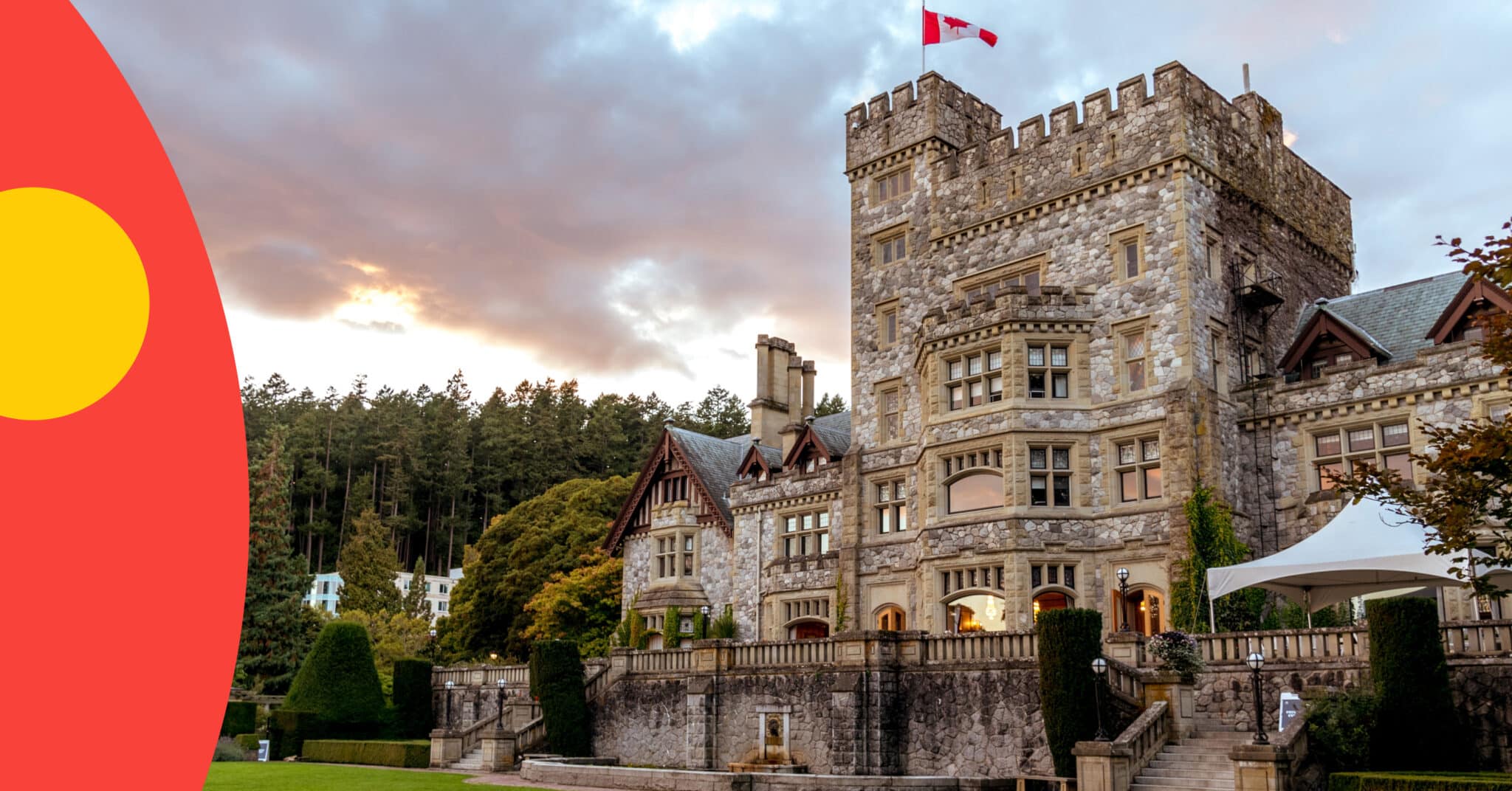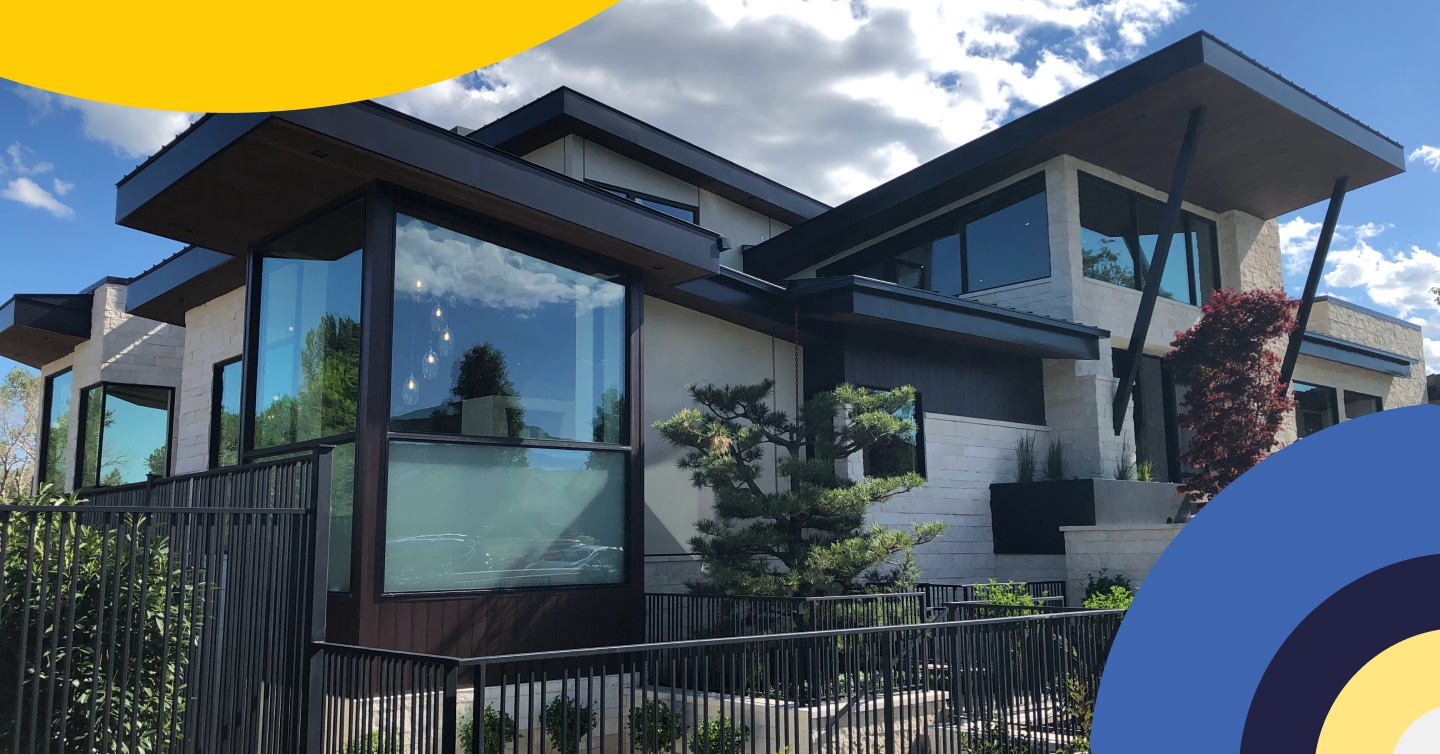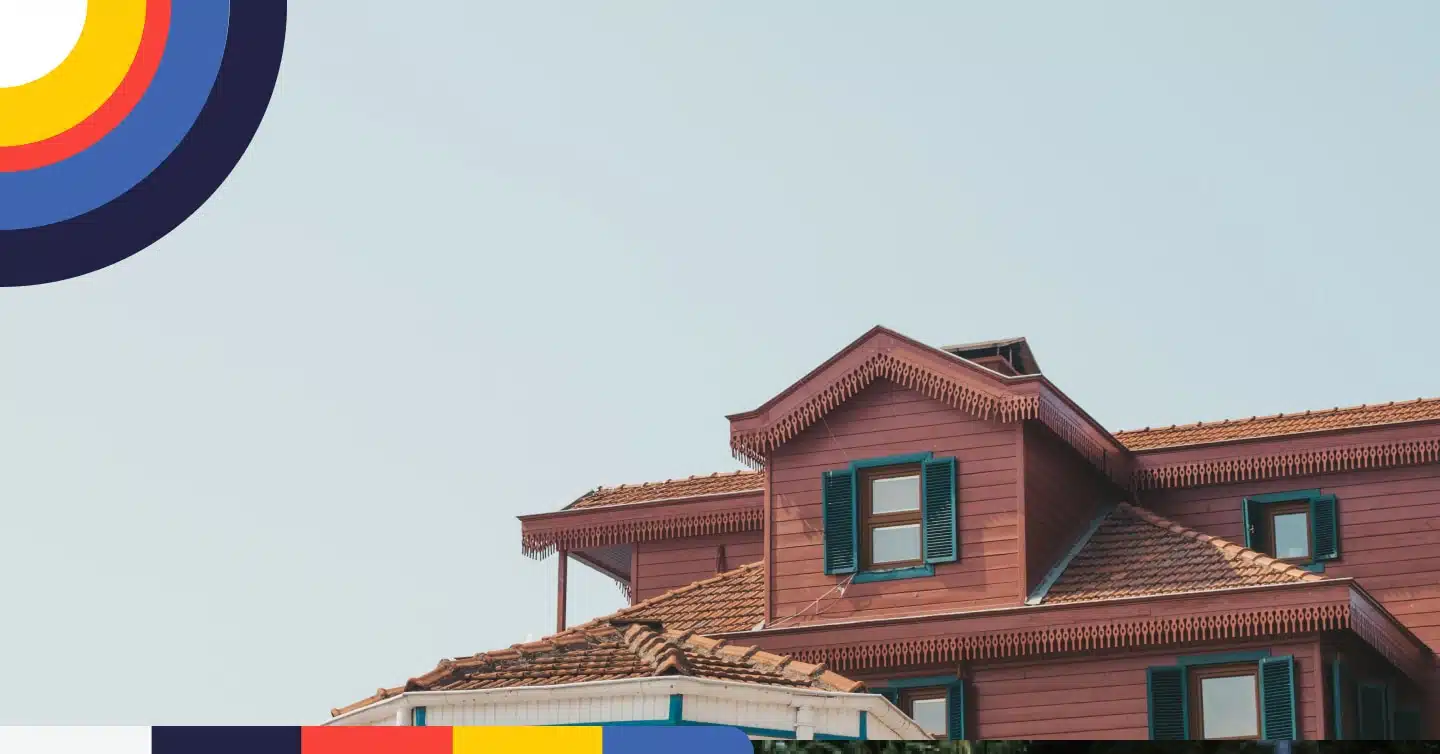Featured articles #Real Estate
Featured articles #Real Estate
Where Should I Live When I Move to Victoria?

Table of contents
Victoria truly is a unique place to call home. Surrounded by water and full of adventure, it’s nestled between the tranquil waters of the Salish Sea and the mighty coastal rainforests of Vancouver Island. Victoria ranks incredibly well in terms of its economic, real estate, climate and amenity ratings, which makes it one of the best places to live, work or retire in Canada. Victoria also features boutique hotels fit for a queen, world-class attractions and fresh farm-to-table dining. We’ve highlighted several neighbourhoods below to help with your research and find the right neighbourhood that meets your specific needs – whether you’re looking to move to Victoria as a family or on your own.
Key Highlights
- Victoria ranks incredibly well in terms of its economic, real estate, climate and amenity ratings, which makes it one of the best places to live, work or retire in Canada.
- Surrounded by water and full of adventure, Victoria is nestled between the tranquil waters of the Salish Sea and the mighty coastal rainforests of Vancouver Island.
- Victoria has a neighbourhood for everyone – whether you plan to move downtown or to suburbs within the Greater Victoria Area.
Best Neighbourhoods to Live in Victoria
Victoria has a neighbourhood for everyone – whether you plan to move downtown or to suburbs within the Greater Victoria Area.
Sourced from CMHC.
James Bay
James Bay is a vibrant and diverse neighbourhood, and a bedroom community to the downtown core. Its extensive waterfront is alive with both commercial and recreational activity. Tourism plays a significant role in its economy with many of Victoria’s key attractions located in the neighbourhood. The heart of the neighbourhood is the village, filled with local shops and many community services. James Bay is extremely walkable and bike-able, and acts as a hub for many running and walking events that line the waterfront on scenic Dallas Road.
Median home price: $1,400,000
Median household income: $89,078
Cost of living is 1% higher than national average
Fernwood
Fernwood Village is at the heart of this residential neighbourhood. Fernwood Square’s charm has been captured in movies and is the community’s gathering place, with seasonal markets, FernFest and other lively celebrations. The village is also home to outstanding theatrical productions at the Belfry Theatre and Theatre Inconnu in the Paul Phillips Hall. Throughout the year, they draw Victorians to the village and its local shops, services and cozy eateries. The Fernwood Neighbourhood Resource Group offers social programs at the Fernwood Community Centre, including daycare for children and a wide range of recreational programs for residents of all ages.
Median home price: $1,400,000
Median household income: $89,078
Cost of living is 1% lower than national average
Cook Street Village
Cook Street Village features one-of-a-kind shopping and restaurants in a European-like setting. Tucked away in Victoria’s Fairfield neighbourhood, Cook Street Village is an earthy, eclectic, commercial corridor. As the largest of four commercial nooks in Fairfield, Cook Street Village offers a slower pace, an array of restaurants and shops, and a neighbourhood atmosphere that blends small town ambience with Old World European flavour.
Median home price: $1,400,000
Median household income: $89,078
Cost of living is 1% lower than national average
Downtown/Inner Harbour
Downtown is centred on the lively Inner Harbour, crisscrossed by tiny ferries, seaplanes and whale-watching boats. Facing the water, the elegant 1908 Empress hotel is famed for its afternoon tea, while seafood eateries and traditional pubs cluster around Wharf Street and Bastion Square. Indie boutiques fill colourful buildings on Johnson Street, and an elaborate red-and-gold gate marks the entrance to Chinatown.
Median home price: $1,400,000
Median household income: $89,078
Cost of living is 2% lower than national average
Fairfield & Rockland
Fairfield & Rockland offer diverse natural features and historic homes. With miles of coastline, city residents and tourists can be found enjoying the walking paths or watching magnificent ocean swells on a windy day. The neighbourhood is home to Cook Street Village, a lively and charming commercial area drawing many to its unique atmosphere and small local shops.
Fairfield & Rockland is a residential community with a mix of low-rise apartments and single detached homes on well-maintained, tree-lined streets. The neighbourhood is filled with city parks, playgrounds and green spaces, as well as major landmarks.
Median home price: $1,400,000
Median household income: $89,078
Cost of living is 3% higher than national average
Oak Bay
Affluent Oak Bay is popular for its tree-lined namesake avenue, filled with smart boutiques and art galleries, fancy delis and lively cafes. Casual spots serving brunch and fish and chips buzz with locals in nearby Estevan Village. A short stroll away, Willows Beach has calm waters for kayaking and paddleboarding, while yachts pack Oak Bay Marina. A coastal drive passes the Victoria Golf Club and ritzy Uplands area.
Median home price: $1,400,000
Median household income: $89,078
Cost of living is 22% higher than national average
Jubilee
Jubilee is a small neighbourhood area bordered by Oak Bay Avenue on the south, Foul Bay Road on the east and Shelbourne Street to the west. The housing is mainly single family, except along Fort Street and Richmond Road where a number of condominium buildings are located. The housing is mostly older homes including early 1900s character homes of more modest pricing. The area is home to many health agencies and institutions, including the Jubilee Hospital, Canadian Cancer Association and the Canadian National Institute for the Blind.
Median home price: $1,400,000
Median household income: $89,078
Cost of living is 4% lower than national average
Mayfair
Mayfair is Victoria’s premiere shopping destination. Boasting 120+ retailers, you can find brands such as Aritzia, Sephora, Coach, Pandora, Bath & Body Works, Banana Republic and Aerie. With a broad fashion selection, a comfortable environment, a variety of international food court options and a friendly guest services team, Mayfair is truly the best shopping on Vancouver Island.
Median home price: $1,400,000
Median household income: $89,078
Cost of living is 3% higher than national average
Vic West
Vic West is surrounded by water and the town of Esquimalt to its west. Accessible shoreline and walkways line its waterfront, wrapping around industrial shipyards and connecting several parks and the Vic West Community Centre in Craigflower Village. The neighbourhood is diverse, from modern harbourfront condominiums to historic hilltop homes. The Galloping Goose Trail is a busy pathway for recreation and commuting from the downtown to Vic West and destinations north over Portage Inlet.
Median home price: $1,400,000
Median household income: $89,078
Cost of living is 1% lower than national average
Esquimalt
Esquimalt has a long and significant history, with a legacy of heritage buildings, historic sites, structures and cultural landscapes. Coast Salish Native people had inhabited the area for over 4,000 years before the arrival of European settlers. Esquimalt has many heritage buildings and beaches. Essentially one large peninsula, Esquimalt is bounded on the south by the Strait of Juan de Fuca, on the west by Esquimalt Harbour, and on the north by a long fingerlike inlet of tidal water called the Gorge. Residents enjoy its many amenities, which include over 40 hectares of beautiful parklands, scenic waterfront walkways, recreational facilities, a superb golf course, shopping and restaurants.
Median home price: $1,400,000
Median household income: $89,078
Cost of living is 1% lower than national average
Gordon Head
Gordon Head is very large neighbourhood featuring a wide variety of housing types. There is a generous supply of single-family homes, but there are also many townhome complexes. The single-family homes vary from 1970s to luxury homes on the waterfront. Adjacent to the University of Victoria, Gordon Head is a favourite location for out-of-town students renting during the school season. Gordon Head is home to diverse ecosystems – from coastal bluffs and marine areas to Garry Oak meadows and Douglas Fir forests – many of which are protected as part of the local community plan. The neighbourhood is also home to 27 parks including Mount Doug Park, the largest park in the municipality of Saanich.
Median home price: $1,400,000
Median household income: $89,078
Cost of living is 11% higher than national average
Cadboro Bay
Cadboro Bay is a seaside community with a quaint village and mostly single-family homes, although a few townhome complexes have been built in the last decade. Many of the homes are situated along the ridge rising up from the ocean and enjoy lovely sea views. Cadboro Bay Village is the heart of the community, offering amenities such as grocery stores, pharmacies, restaurants, neighbourhood pubs and cafés.
Median home price: $1,400,000
Median household income: $89,078
Cost of living is 21% higher than national average
Find a better rate, and we’ll match it, beat it, or give you $500*.
*Conditions Apply
With nesto, it’s stress-free
Victoria Suburbs
Brentwood Bay
Brentwood Bay is a quaint community located on the Saanich Inlet in Central Saanich. It offers a variety of real estate options including single-family homes, townhomes and condominiums. Many homebuyers are drawn to the Brentwood Bay’s small resort town feel and boat lovers appreciate its many marinas. The area’s top tourist attraction is Butchart Gardens, which is open year-round, and is renowned for its dazzling floral displays. In the Summer, the Gardens feature live entertainment showcasing top tier local and regional performers. Brentwood Bay is also home to the world-class Brentwood Bay Resort and Spa, a number of bustling marinas and a few funky, casual cafés located right on the water.
Median home price: $1,400,000
Median household income: $89,078
Cost of living is 3% higher than national average
Saanich
Located just north of Victoria, Saanich is the largest municipality with a population of around 110,000. Saanich is comprised of a wide range of neighbourhoods, established and new, suburban and rural. Saanich contains diverse housing options including apartments, condos and multifamily housing as well as single-family residences from modest to grand. There are upscale neighbourhoods and typical suburban neighbourhoods, also rural residential and acreage properties. Saanich features over 18 kms of oceanfront and several freshwater lakes so there are also lovely waterfront and waterview properties. As some of the older neighbourhoods are being rejuvenated, small post war housing is being replaced by newer homes and townhouse developments.
Median home price: $1,400,000
Median household income: $89,078
Cost of living is 6% higher than national average
Swartz Bay
Swartz Bay is a neighbourhood in the municipality of North Saanich, around 30 kms north of Victoria, It’s well known as the location of BC Ferries Swartz Bay terminal from which you can sail to Vancouver, Saltspring Island and other Gulf Islands. A relatively sparsely populated neighbourhood, Swartz Bay enjoys larger than average lot sizes and a decidedly rural, west coast atmosphere. There are lovely waterfront properties perched on the rocky, treed coastline offering superb views of the southern Gulf Islands. For those who enjoy boating in the protected waters of the Salish Sea, moorage is available at picturesque Canoe Cove Marina.
Median home price: $1,400,000
Median household income: $89,078
Cost of living is 18% higher than national average
Royal Oak
Royal Oak is a diverse neighbourhood in West Saanich, about a 10-minute drive north on the Pat Bay Highway from Victoria. Running along the eastern side of the highway, Royal Oak offers a wide range of housing including newer townhome projects, suburban single-family homes and a few larger rural properties. People living in Victoria will find access to the city from Royal Oak is excellent, whether by car or transit, as it’s only a short commute. Royal Oak has an excellent commercial centre providing almost every type of shopping and services including dental and doctor’s offices, restaurants, pubs and recreation. Although the atmosphere leans rural, this neighbourhood offers great walkability and excellent transit access so those who prefer to forego the expense of owning a car can live here easily.
Median home price: $1,400,000
Median household income: $89,078
Cost of living is 1% lower than national average
Langford
Due to expansion and its central location, Langford is becoming the commercial core of the Western Shore. Residents of Langford and the neighbouring municipalities no longer need to journey to Victoria for choice shopping, because it’s right here. The Victoria International Airport and BC Ferries are close by when you need to get out of town. Homes in Langford are more affordable than Victoria, and all manner of housing can be found here – condos, townhomes, single and multifamily residences. Although focused on providing affordable options in housing, there are also neighbourhoods containing luxurious homes, lakefront properties, country estates, small acreages and hobby farms. Near the commercial centres, homes benefit from the pedestrian and bicycle friendly design that Langford has promoted. There are specific development projects underway that meet high standards of sustainability and social equity, pioneering a new approach to development in Canada.
Median home price: $1,400,000
Median household income: $89,078
Cost of living is 3% lower than national average
Sooke
Sooke is a largely rural municipality with a developing residential core and is the westernmost of Greater Victoria’s western communities. The industries that established Sooke are fishing and logging, and these continue to contribute to the local economy, although on a reduced scale. Tourism plays a leading role these days, both adventure related and cultural tourism have been promoted quite successfully. Sooke boasts a vibrant arts community, and hosts the premier juried art show on Vancouver Island – the Sooke Fine Arts Show – each summer.
The commute to Victoria is not arduous and many residents have chosen to live in Sooke to escape the hustle and bustle of the city, and because of significantly lower property values. Choices in housing are varied, including condominiums, townhomes and suburban family homes in and near the village, and hobby farms, country residential and estate properties out of town.
Median home price: $1,400,000
Median household income: $89,078
Cost of living is 6% lower than national average
Mill Bay
Mill Bay is located on the southeast shore of Vancouver Island, approximately 41 kms north of Victoria. Mill Bay features quiet waterfront streets, and gorgeous views of the ocean and the Gulf Islands. Mill Bay Nature Park is a great place for walkers providing easy oceanfront trails. It’s surrounded by Vancouver Island parks and scenery perfect for hiking, cycling and boating.
Median home price: $1,400,000
Median household income: $89,078
Cost of living is the same as the national average
FAQ
Following are some answers to popular questions about living in Victoria that should help with your decision about where to move within the city.
Which part of Victoria is best to live in?
The part of Victoria that’s best to live in really depends on your personal or family needs and budget. There’s truly a place for everyone in Victoria.
What is the best suburb to live in Victoria?
The best Victoria suburb to live in really depends on your personal or family needs and budget. There’s truly a place for everyone in Victoria.
Is moving to Victoria worth it?
Yes, moving to Victoria is worth it. If you’re looking for a vibrant city surrounded by gorgeous water views that has access to everything and a healthy lifestyle, Victoria should be on top of your list. Victoria ranks incredibly well in terms of its economic, real estate, climate and amenity ratings, which makes it one of the best places to live, work or retire in Canada.
How much should I save before moving to Victoria?
It’s best to save as much as you can before moving to Victoria when compared to other cities in Canada. But, when compared to other major cities in the world, house and condo prices in Victoria are reasonable, although they have increased in recent years. Prices vary from area to area.
Final Thoughts
If you’re planning to move to Victoria, you have a lot of great communities from which to call home. Every neighbourhood offers something unique – from rich culture and child-friendly living to excellent green spaces, water views and amenities.
Ready to get started?
In just a few clicks, you can see our current rates. Then apply for your mortgage online in minutes!















